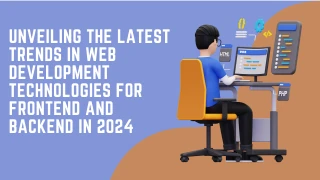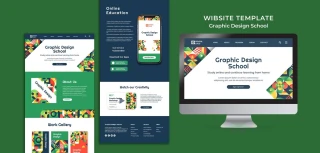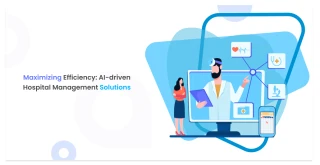Table of Contents
Have you ever felt like some apps understand you really well? It's not just good design; it's a peek into the future of how we interact with technology. Machine Learning (ML) is a big part of why these apps feel so intuitive. But why does ML matter in how we design apps? Let's explore how it's changing things in a big way. It's not just about making apps look nice; it's about making them easy to use and understand. Imagine an app that knows what you like and helps you without you even asking. That's what happens when AI and design come together. Let's see how ML is shaking up the way we make apps.
We're going to see how this tech changes how we use apps and devices. How does ML make personalization and user-friendliness better? What about voice and language recognition? How do they change things in UX? Let's break down these topics in a way that's easy to understand. Whether you're really into design or just curious about how your favorite apps work, our journey through the evolution of UX design will open your eyes, and it might even surprise you!
Enhancing User Experience with ML:
Machine learning is changing how we design UX, showing how ML is transforming industries. It's like turning the app into a helpful friend. It's more than just making the app look good; it's about making it smart and flexible. Think about apps with layouts that feel like they were made just for you, designs that everyone can use easily, features that guess what you want next, and talking to your app as naturally as chatting with a friend. ML is about making UX super user-friendly and focusing on your needs. It's like your app understands you, creating a smooth, welcoming experience that's always a step ahead of what you expect.
Personalization: In today's UX design, personalization is important. It's about providing a unique experience to each user. This starts by knowing what each person likes, how they behave, and what they need from the app. Machine Learning (ML) analyzes behavioral data to create a user profile that's unique. This isn't just about adding a user's name to a screen; it's about making a customized interface for them. Imagine opening an app that knows your likes and dislikes, changes its layout and content to suit your mood, and offers suggestions that feel like they're from a friend who knows you well. That's the power of Data-Driven Personalization.
The beauty of ML-powered User-Centric design is its subtlety. It quietly adjusts your environment to your liking without you having to ask. This could mean changing how information is presented, offering shortcuts to frequently used functions, or altering the color scheme to match your preferences. Personalization in UX is about creating an experience that feels less like using a tool and more like interacting with a companion who understands you. It's about creating a connection and a sense of belonging. This is where ML shines, turning data points into a personal user experience.
Accessibility: In today's UX design, accessibility is more than just a checkbox. It's about making things inclusive for everyone. Machine Learning (ML) turns the concept of 'design for everyone' into reality. It's about making experiences everyone can enjoy, regardless of their abilities.
Think of ML in accessibility as a bridge. It connects different user needs with tech in a way that's never been done before. It helps make assistive tech that adapts to what each person needs. Picture an app that changes its setup for users who have trouble seeing, makes text bigger for those who find reading tough, or streamlines how things work for older users. That's true inclusive design.
But accessible UX design isn't just about following rules. It's about meeting the diverse needs of all users. With ML, apps can learn from how people use them, improving their usability over time.
Predictive UX: Predictive UX is like looking into the future of app design, where ML isn't just reacting to what users do but guessing what they'll do next. It's about actively anticipating what users might need, using smart analytics to figure out those needs before they come up.
Imagine having a crystal ball powered by understanding data patterns. ML algorithms dive into how people use your app, picking up their habits and likes. That's how you get predictive user interfaces - those smart interfaces that change on the fly, showing options and features that users will probably want next. This forward-thinking design is changing the game, turning a regular user experience into something amazing.
Imagine opening an app and finding it's already set up for what you need, guiding you to your next step. It's like the app's always one step ahead, smoothing out your digital journey. Predictive UX isn't just great for making users happy; it's also a smart money move. By figuring out and meeting user needs, apps can cut down on the need for big redesigns and updates, keeping app development costs in check.
Predictive UX is a new way of looking at app design. It's about making an app environment that's not just user-friendly but also thinks ahead for the user, delivering a smooth, tailored experience that feels right.
Voice and Language Recognition: Imagine giving your app the ability to understand and respond to voice commands, all thanks to machine learning (ML). We're talking about natural language processing (NLP) and voice user interfaces (VUI), changing how we interact with our apps.
This tech isn't just some flashy gimmick; it opens up a new world of easy and inclusive interactions. With speech recognition, your app can listen and talk back, moving beyond just typing and tapping. It's like having a real conversation with your app, where it understands your words and what you mean by them.
Adding language models to an app is like teaching it to understand all sorts of accents, dialects, and talking quirks. This leads to a voice-enabled UX that's about more than just taking orders. It's about connecting and chatting.
NLP is all about making life easier. Imagine running your app with just your voice, doing stuff without even moving a finger. This is especially great for people who find traditional tech tough to use, making apps more user-friendly for everyone.
Bringing speech recognition into apps is a big move towards more interactive interfaces. It's shifting from clicking on things to just saying what you need. That's where UX design is heading: intuitive, welcoming, and interactive, where your voice does all the work. It's not just making the user experience better; it's giving users more power, all thanks to the smart combo of ML, NLP, and some seriously cool design thinking.
Conclusion:
In today's UX design world, adding Machine Learning (ML) is more than just a trend. It's changing how we create new user experiences. When we use ML to make experiences more personal, easier to use, and better at guessing what users need, it's not just about keeping up with technology. It's about rethinking what it means to design efficiently and effectively.
With machine learning, designers can make experiences that are smart and connect with what users want. The result? Designs that understand what you need, respond quickly, and focus on what the user needs. So, for any UX designer who wants to stand out, understanding ML is essential.


















 +91
+91